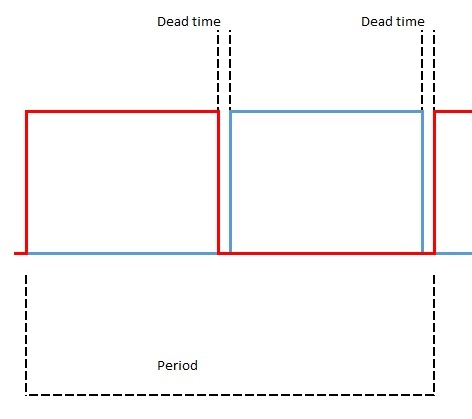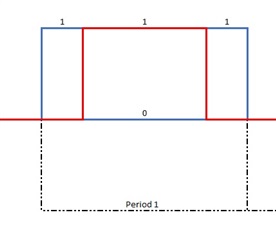Hello,
I use nrf52840 hardware FallingEdge polarity PWM (NRF_PWM0) , to generate 2 signals ~50% each (inverted). I do manage to set dead time between pulses in same period, but I cant set up dead at the end of each period (and i do fully undestand that it is impossible, acoording to PWM Specification Figure 2. PWM counter in up mode example - FallingEdge polarity).
But is there a way to set up a dead time around 120ns using Hardware PWM (NRF_PWMx)?
On figure below is what i want to achive.
Wasky





